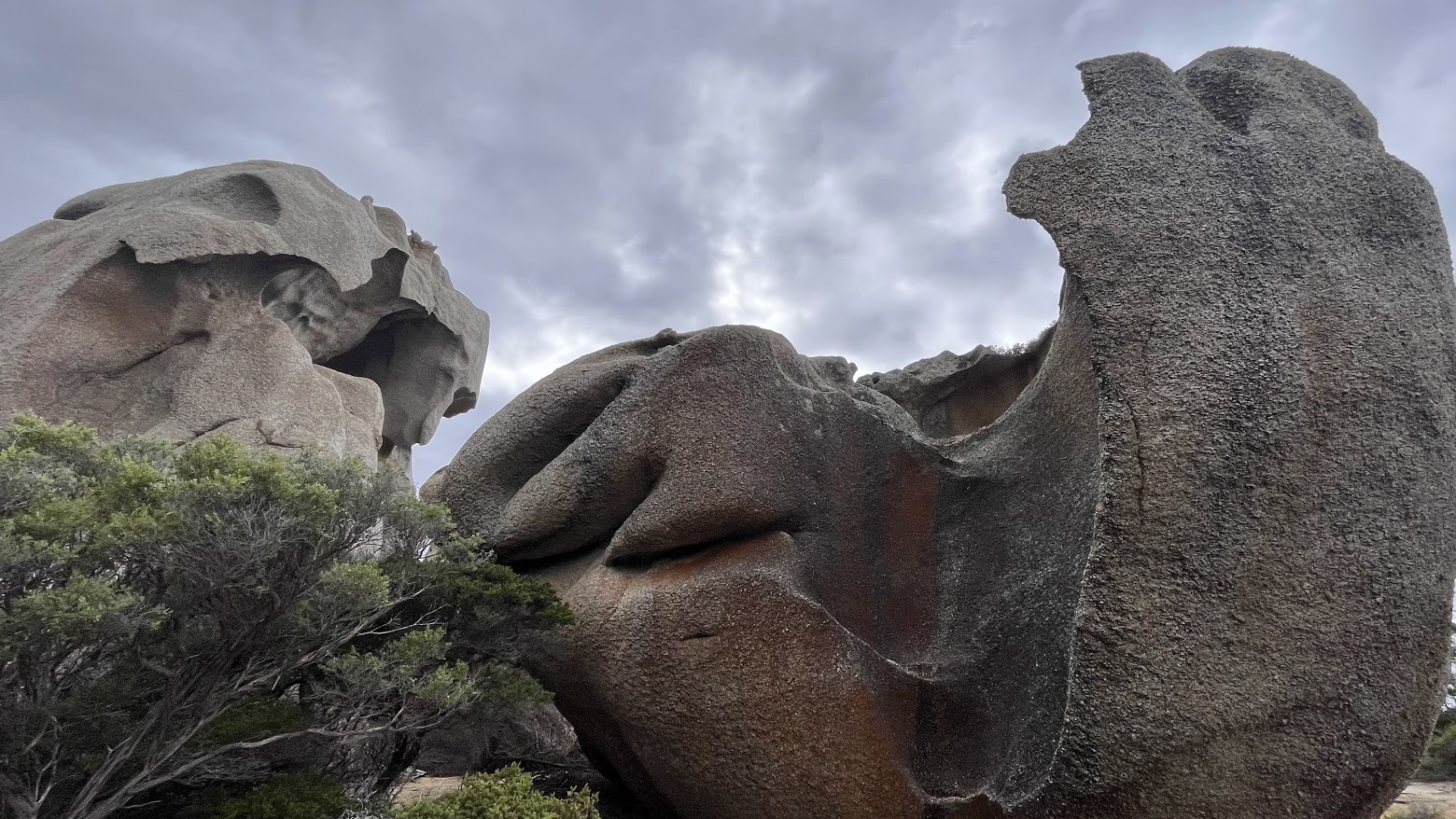This year, I finally completed the Wilsons Promontory Lightstation Walk (the 2 day, 1 night version). The only other overnight walk I’ve done is the Three Capes Track in Tasmania, so this ended up being another great introductory hike.
Wilsons Prom is known to have unpredictable weather, being on the southern-most tip of mainland Australia. Booking for February meant the weather could go either way – but you have to book a few months in advance, so I took whatever was available.
We were granted with a cool 19 degrees, despite it being summer. We checked in at the Tidal River Visitor Centre, parked at the Overnight hiker’s carpark, and caught the free shuttle bus up to the Telegraph Saddle carpark to begin the walk.
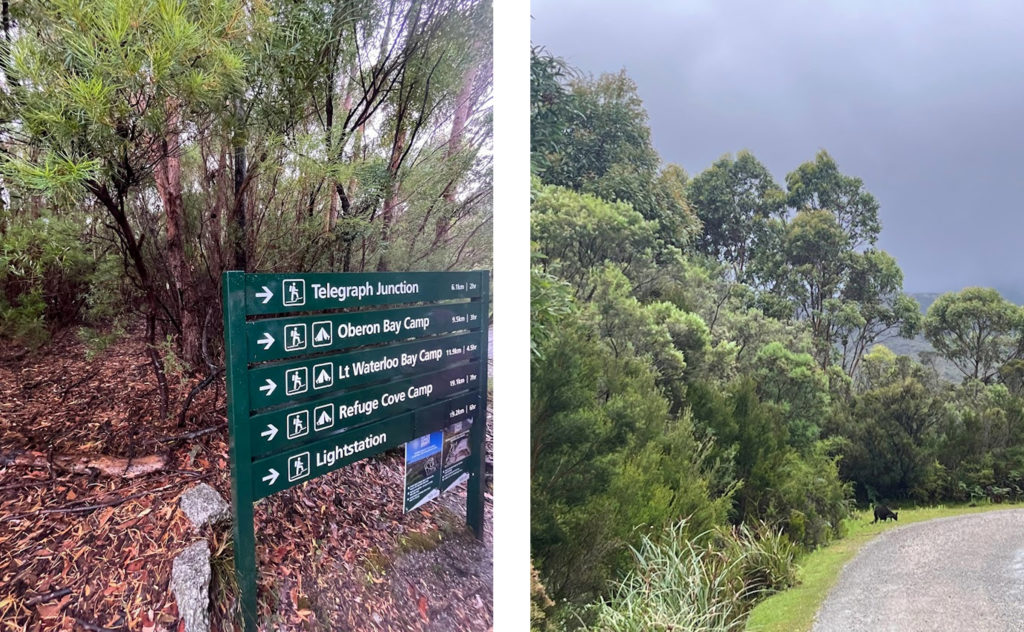
As it was overcast for day one, we stuck with the recommendations to conquer the walk in an anti-clockwise direction by taking the vehicle maintenance track. The signage indicated it would be 19.2 kilometres, six hours to the Lightstation.
The track was undulating to keep things semi-exciting, but there wasn’t a lot to see, except for a trickle of water falling over some rocks and some creeks.
Six kilometres in, you reach a few benches at Telegraph Junction. From here, you can head to the coastal walk, but we were saving that for Sunday. Whilst we were here, we spotted a wallaby, who was not phased by us at all.
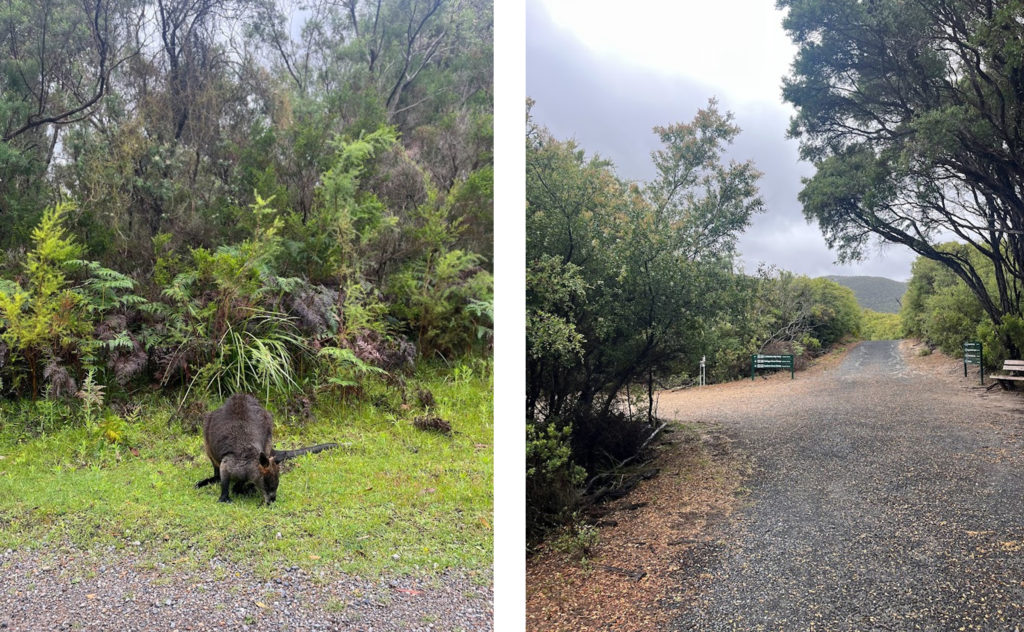
Another 30 minutes and you reach Halfway Hut, which was recommended for our lunch stop as it had a toilet. We escaped the rain and cosied up into the shelter of the stone hut, which was a welcome rest.
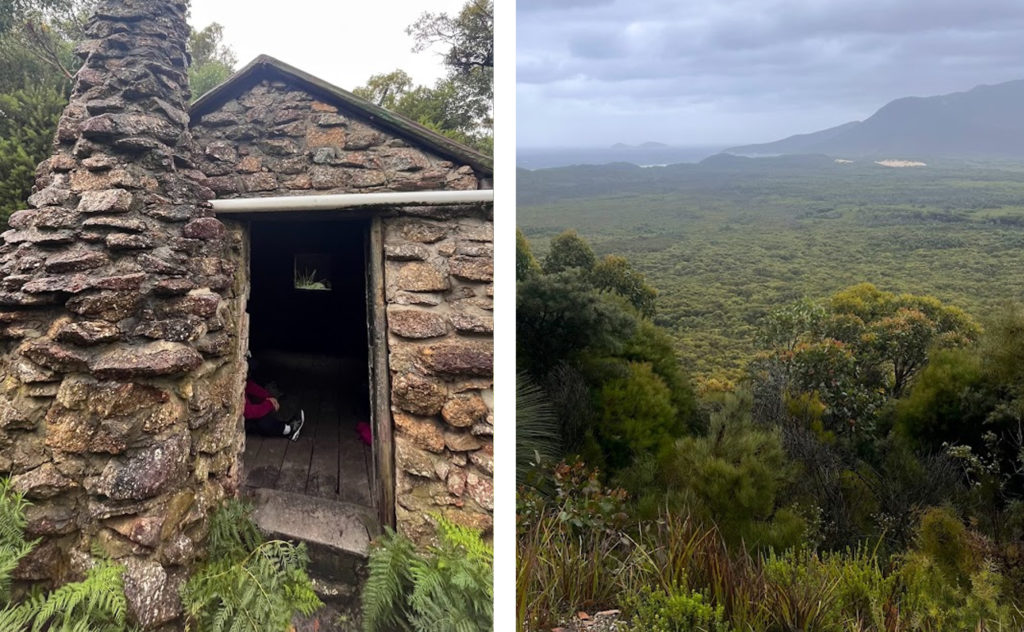
After another 90 minutes, we came at another crossroads. We could continue along the maintenance track for 7.2 km or take the 6.1km walking track. We were suspicious as to why both options would take 2 hours, but we were keen for some adventure.
The walking track was surrounded by lush vegetation, whilst the track was a little damp and muddy. Some parts of the track were so narrow that you had to manouvre through branches. It was definitely harder, with steep, uneven steps at parts – but it was also a nice change to the monotonous track.
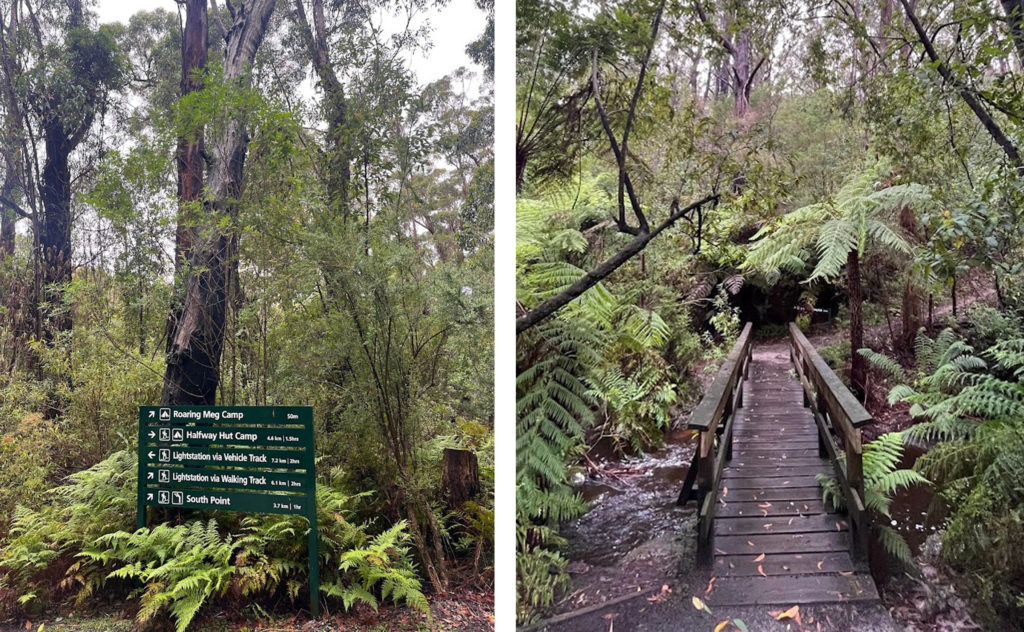
You eventually end up back at the vehicle track, as you embark on your last part of the journey. We were a little behind schedule as our energy was dwindling but luckily daylight savings meant we were not racing against time before the sunset.
The track starts opening up to views of the ocean, but when I spotted the Lightstation in the distance, I realised there was still some way to go.
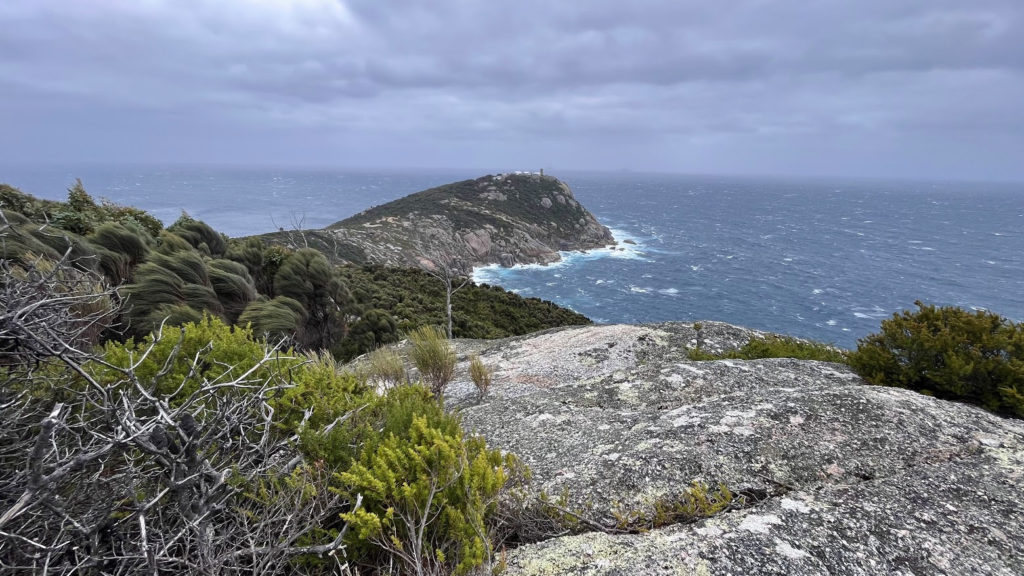
As you get closer to the Lightstation, you pass a formation dubbed Skull Rocks, not to be confused Skull Rock, which Pennicott Wilderness Journeys takes people on tours to from Tidal River. Just when you think you’re nearly there, there is one last steep ascent to the Lightstation.
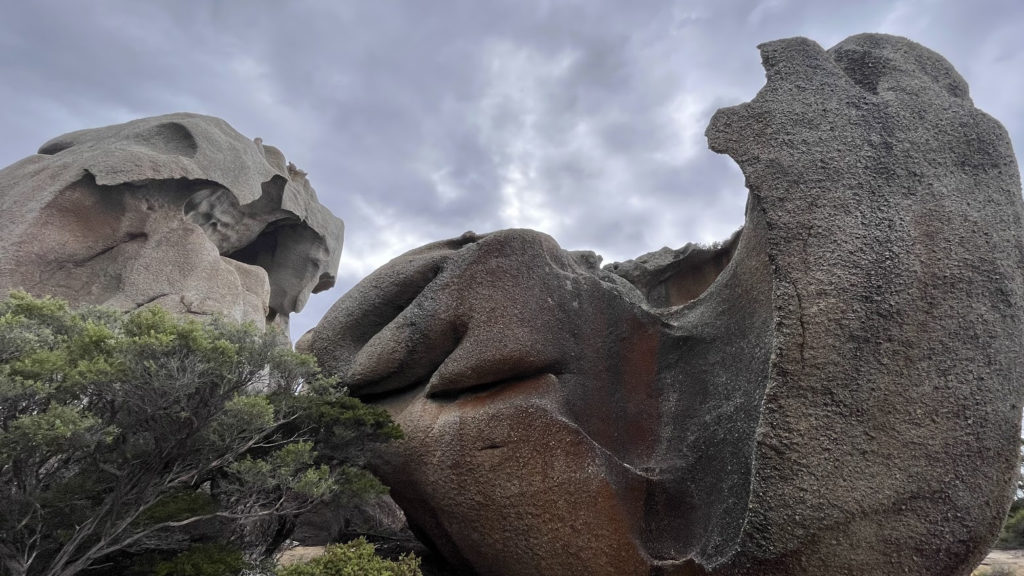
Once we made it to the top, exhausted, a ranger spotted us and checked us in. I was surprised to find it so spacious, since there was more than one cottage. We were only sharing our cottage with three people and most of the time it felt like we were the only ones there. There were two showers and two toilets, with plenty of toilet paper and hot water.
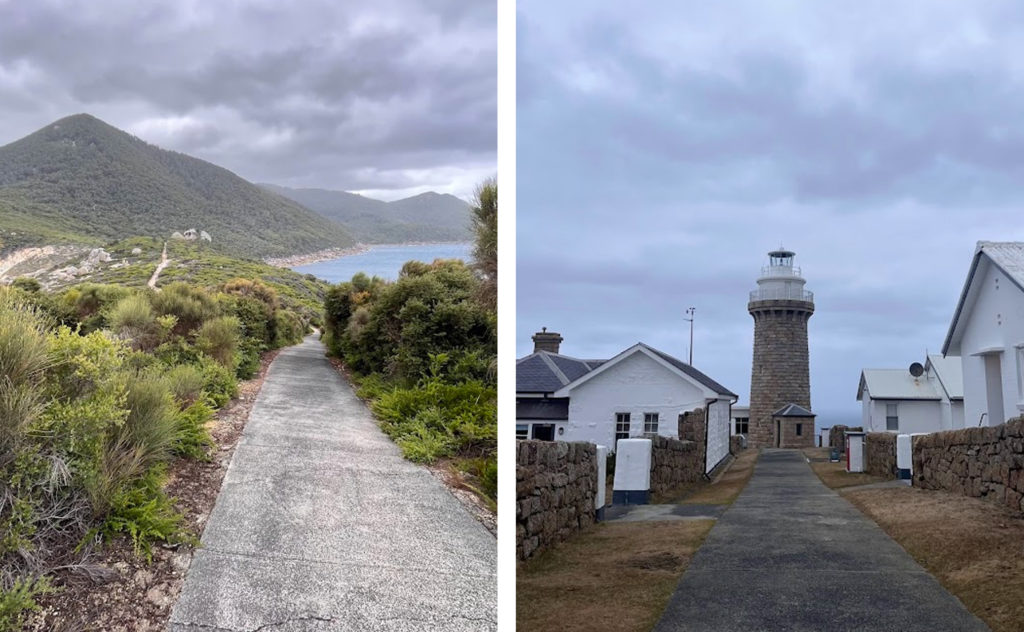
The small things made the accommodation feel luxurious for a remote location. A living room was radiating with heat from a gas fireplace, whilst the shelves were lined with an interesting mix of reading material and board games. The kitchen had a fridge, stove, oven, kettle, toaster, microwave and plenty of cutlery, crockery and glasses. The only thing I couldn’t find was a chopping board.
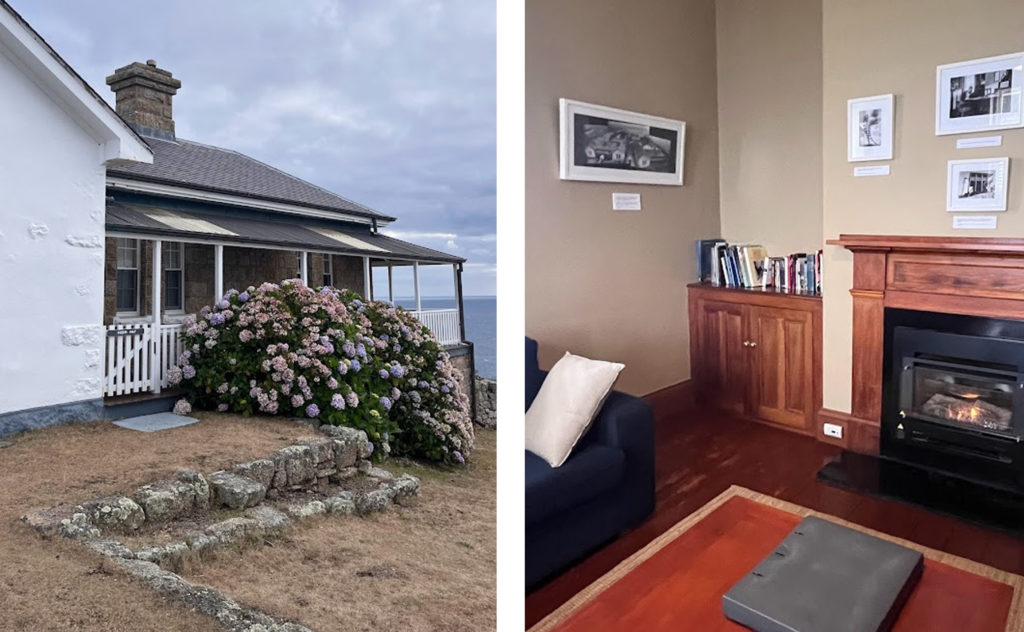
Each bedroom has two bunks. They provide pillows, whilst we brought our own sleeping bags. Even the bedrooms felt spacious – plenty of room to unpack and air out clothes and bags.
The next morning, we joined a lighthouse tour. It’s amazing to see how the parts for a lighthouse have developed over the years – the bulb is tiny! In the cooler months, you can also spot whales migrating around the Lightstation.
By the time we departed the Lightstation after the tour, we were a little behind schedule. We knew the trek back via Waterloo Bay was known to be a lot harder, and longer at 21 kilometres and 7 hours. We also needed to catch the last shuttle bus at 5.45pm, otherwise we’d have to hike even more back to the car.
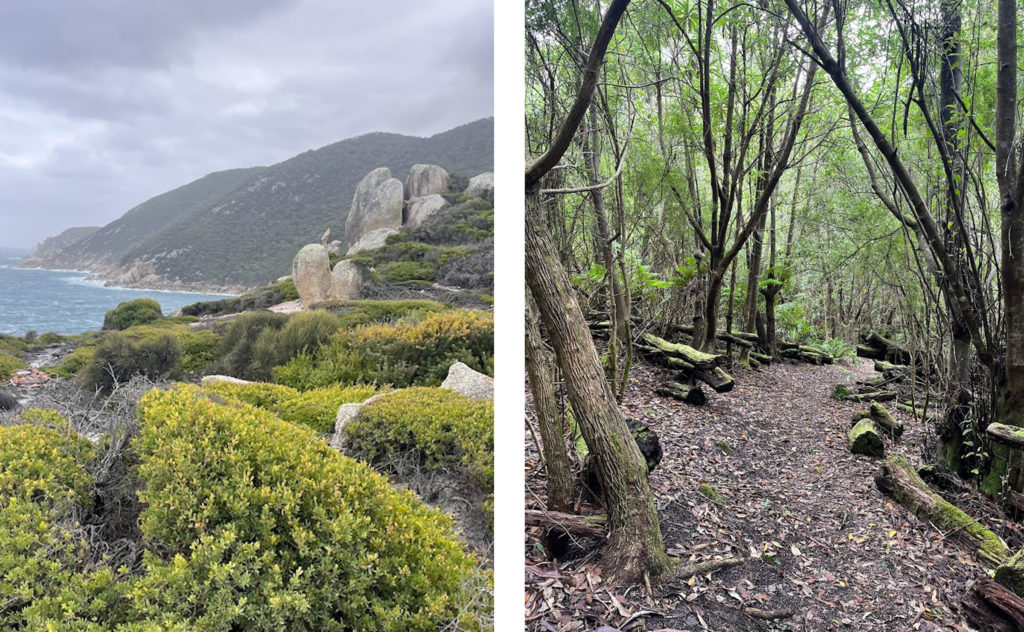
The “coastal route” still winds through lots of rainforest, but at least it felt more like a hike. The track constantly goes up and down hill, which was painful either way, as we were sore from Day 1. I tried to speed up on the downhill sections to keep the momentum going. Every now and again, we got a glimpse of the pretty coastline, but it was often obscured by trees. We suffered three hours or more of this…
But when we started approaching Little Waterloo Bay, I was stunned. I’d never seen a Victorian beach with aqua water and white sand. I suddenly understood why so many people loved to do overnight hikes here.
We sat and enjoyed some sandwiches, as we admired the view. The only downside was the march flies.
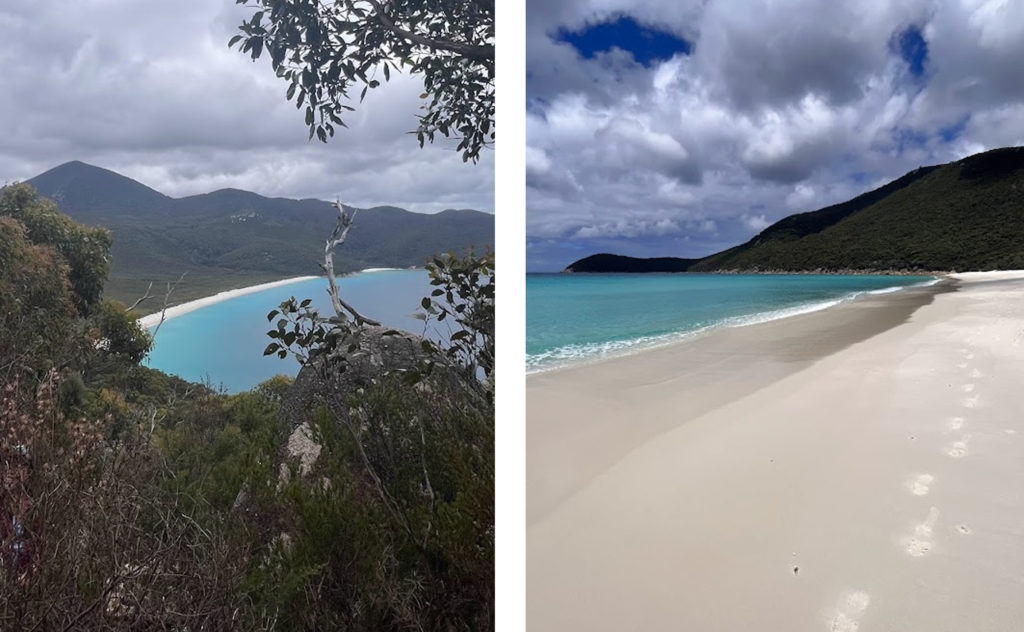
When we resumed, we realised we had to walk across the sand on the beach for a little. Not fun with our large hiking packs.
You then reach another sign that points you back onto the walking path. A lot of this section consists of short boardwalks over swampy areas. The boardwalks were a nice change, but eventually you’re back at a windy, gravel uphill, which was tough with the strong sun rays.
At this point I had gone ahead of my group, to make sure at least one of us gets the last shuttle bus and our car. I struggled in this section without anyone to encourage me…but then I was surprised to suddenly find myself at Telegraph Junction, after less than 2 hours, as the signage had estimated.
From here, I had enough reception on Google maps to estimate our walk back to the carpark and figured we had enough time for a break. So I waited for everyone to catch up for a rest and some snacks at the benches.
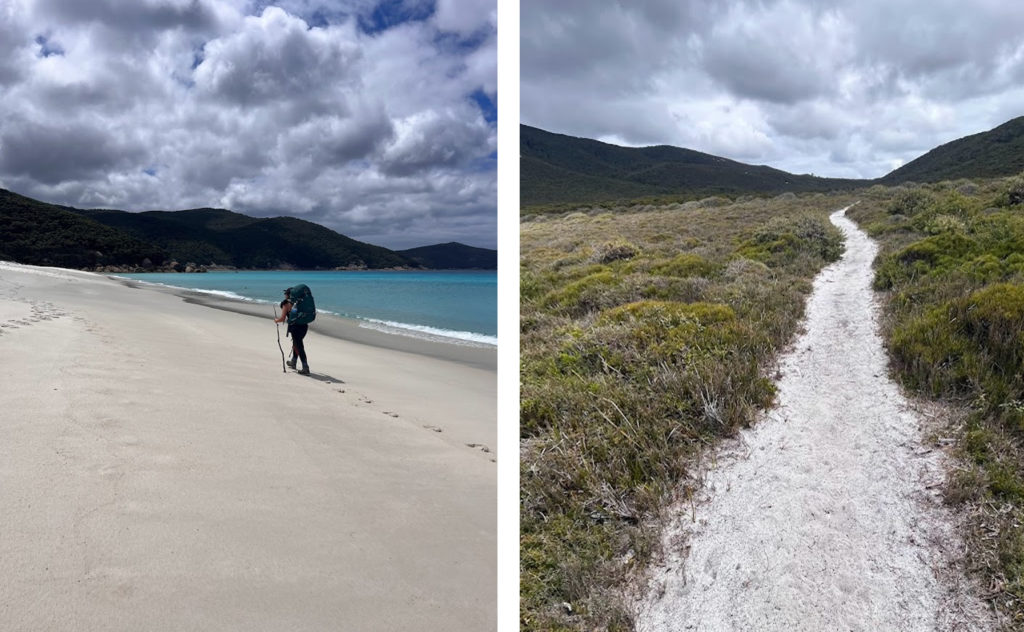
With the sun out, the march flies were also out – so we couldn’t sit still for long. It was time for our last two hours back to the carpark (a bit less according to Google).
My feet and legs were very sore by this stage. I must have had blisters as every step was painful, and the maintenance track slowly wound up and down.
Many hikers overtook us and although I know it’s not a race, I was aware that I was slowing us down.
But after a lot of small breaks, we found ourselves back at Telegraph Saddle with a big sigh of relief. I’m proud we accomplished it – but note to self to do more practice hikes in the lead-up next time. We got to the carpark with fifteen minutes to spare – so we sat back at a bench, took in some views in at the lookout and waddled onto the bus.
I’d highly recommend the walk due to the great accommodation you get at the end, and the walk itself is a good challenge. I’ll definitely return one day to see whales and enjoy a bit more time at Waterloo Bay.

